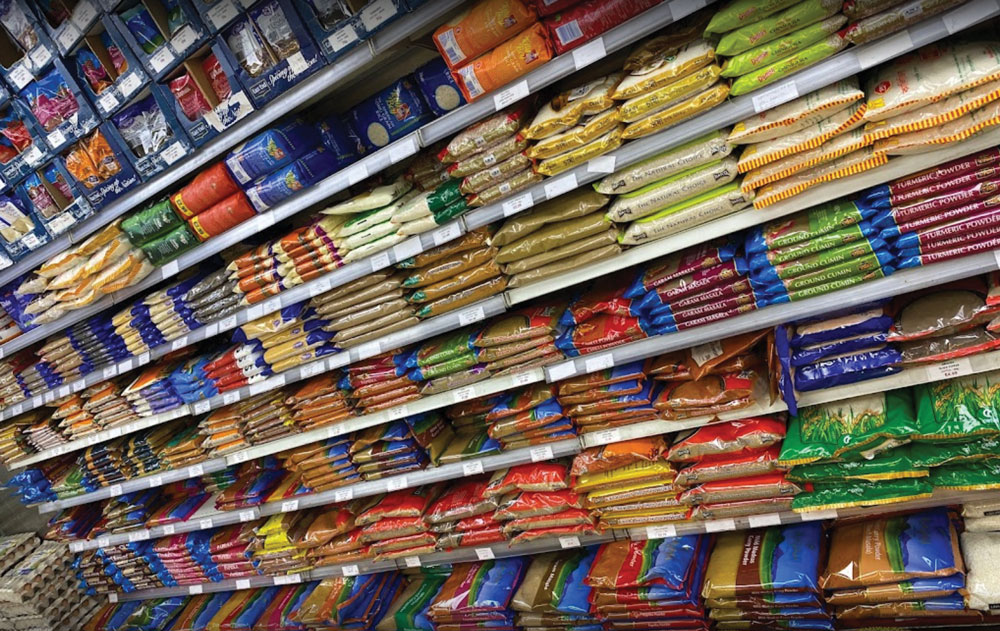
Hardly a day seems to go by without another worrying statistic about price hikes. In the last month alone, petrol costs have soared and retail price inflation hit 2.8%, the highest figure since July 2011, driven by an increase in fresh food prices, according to the British Retail Consortium. Businesses have also struggled with rising energy costs over the last few months and there are warnings of worse to come.
Curry houses are increasingly worried about their future prospects, having been hit hard by the price of oil, in particular that of sunflower oil. With the majority produced in Ukraine, prices have soared due to the ongoing conflict with Russia. Spice prices have increased too.
Rahims, the UK’s largest Bangladeshi-owned cash-and-carry, which supplies over 5000 retailers and trade customers across the UK and beyond, and Ana Miah, the owner of Juboraj restaurant, in Wales, offer their views on the pricing issue.

Sharif Hussain, Director, Rahims
The outlook has been quite challenging for a few years, starting with Brexit, followed by Covid and now inflation – all of this is causing prices to go through the roof. Brexit uncertainty meant the general public spent less and there was uncertainty surrounding the trade rules with the EU, compounded by worry about the imports and exports and the amount of red tape. This resulted in lots of stockpiling.
During Covid we had panic buying which led to well-documented supply chain issues and there were increasing costs in manufacturing from a number of factors, for example, staff shortages in India, Bangladesh and many other countries. During the global pandemic, everyone faced really challenging situations and factories were closed and it was difficult for the manufacturers themselves. Then there are problems with freight, with not enough empty containers heading back to source to bring in the goods from abroad. This means freight costs have just soared, and it all has a knock-on effect. There is also a backlog at UK ports: a shortage of staff means longer times to process imports and this also has an impact on the supply chain.
Smart purchasing
We initially tried to swallow the costs as much as we could but it gets to a point where it is unsustainable, particularly when you look at the current climate, with energy bills increasing, and minimum wages stagnating. It all has a knock-on effect and we have to pass these costs on; people are understanding luckily but we have been advising our customers as much as we can about smart purchasing, This means buying now to prevent further issues or finding cheaper alternatives to basmati rice. We’ve seen a shift in our customers’ buying habits, changing from traditional basmati grain to extra long grain; there is one and a half percent yield in comparison, so we are advising people to spend smarter. But prices are continually going up, with spices it is a daily thing. It’s also challenging with the war in Ukraine and the oil situation, while a lot of chicken comes in from Europe; the price of chicken has soared and we have no idea when this will end.
With smarter purchasing, we are advising people where they can save money without compromising on quality. Traditional balti houses that ‘cook out of a can’, such as those using premade marinades, are likely to suffer but those that are smart, that are looking at fusion cooking or using fresh ingredients, will come through this crisis strongly. Premade marinades make it easier for the restaurant to have fewer skilled employees, saving on staffing costs but then it does not make you unique. It will be these sorts of businesses that will suffer while those that are spending a bit more on quality, will do well.
We are also advising our customers about the benefits of going digital in terms of having to adjust their prices in the current climate, as they won’t have to spend so much on reprinting costs, for example. It’s important to go digital as soon as you can, with your menu and advertising.
Next steps
We need a level of cohesion within local businesses: we are all in the same boat, let’s not shoot each other in the foot. We need to address our issues altogether and come up with a plan that suits us all – one rotten apple can bring everyone down.
Is it reasonable for restaurants to increase the price of dishes? It’s difficult to say whether it is good or bad, and what else can they do? They can either change the ingredients, and compromise on quality or in order to maintain quality, they have to increase prices. If the quality goes down, customers may not come back again. You have to be smart and look at alternatives.
Thankfully we all need to eat and we have all managed to save some money during Covid. People do have disposable income to spend and once inflation settles down, who knows?
At Rahims we are actively working with manufacturers on a regular basis to try and maintain price levels for the caterers. We are trying to take advantage ahead of any further price hikes and as we have live information on price movements, we are looking at how best to advise our customers on their purchases.

Ana Miah, Owner, Juboraj
The cost of goods, ingredients and energy has had a huge impact on our expenditure – week in and week out, our outgoings have substantially increased and we are finding it very difficult to sustain levels of business. Increasing the prices on our menu is easier said than done, we don’t particularly want to pass on our price increases to our customers. If we were a seasonal business, we could change prices according to what we pay our suppliers but unfortunately, this is not the case.
Challenging times
We are finding it very difficult to pass on extra increases to our customers so we are having to bear it for the moment but how long this can go on for is anyone’s guess. We can’t sustain this for months to come – we have put up prices in the takeaway sector but at present, for those dining in we‘ve maintained the same prices. It’s easier to justify price increases with the takeaway than with the dining-in menu as we offer quite generous portions.
We haven’t explored digital menus just yet; as a lot of our menus are printed, it’s complicated to make these sudden changes. We do have our own website for online ordering and also use a third party, Uber Eats. We try to attract customers to come onto our website by giving out leaflets, for example, offering them a discount if they order directly from us rather than using a third party. It’s something I have started relatively recently and we are seeing a good number of people moving to our own web ordering system rather than going through a third party. We may see a time when enough of our customers have moved to our website so that we can reduce our reliance on third parties, although we introduced this during the pandemic to help boost the takeaway side. You have to do a bit of mixing and matching and see what works and be prepared to change if necessary or do a number of trial runs.
Healthy approach
We are making a conscious effort to provide more healthy food using ingredients that are better for the consumers. We are aware of the high level of calories that some of our dishes can contain, so we are cutting down on our use of oil. Indian cuisine has a reputation for being unhealthy so it’s important – even in the context of price hikes, to keep improving on these areas in order to keep our customers coming back. We have certainly become very price conscious and we are looking to seek deals wherever we can find them and buying non-perishable goods in bulk. We are in a more fortunate position as we have extra storage space so we can store many goods. It’s about finding the right solutions that suit your business the best, testing these and seeing what difference they make.



